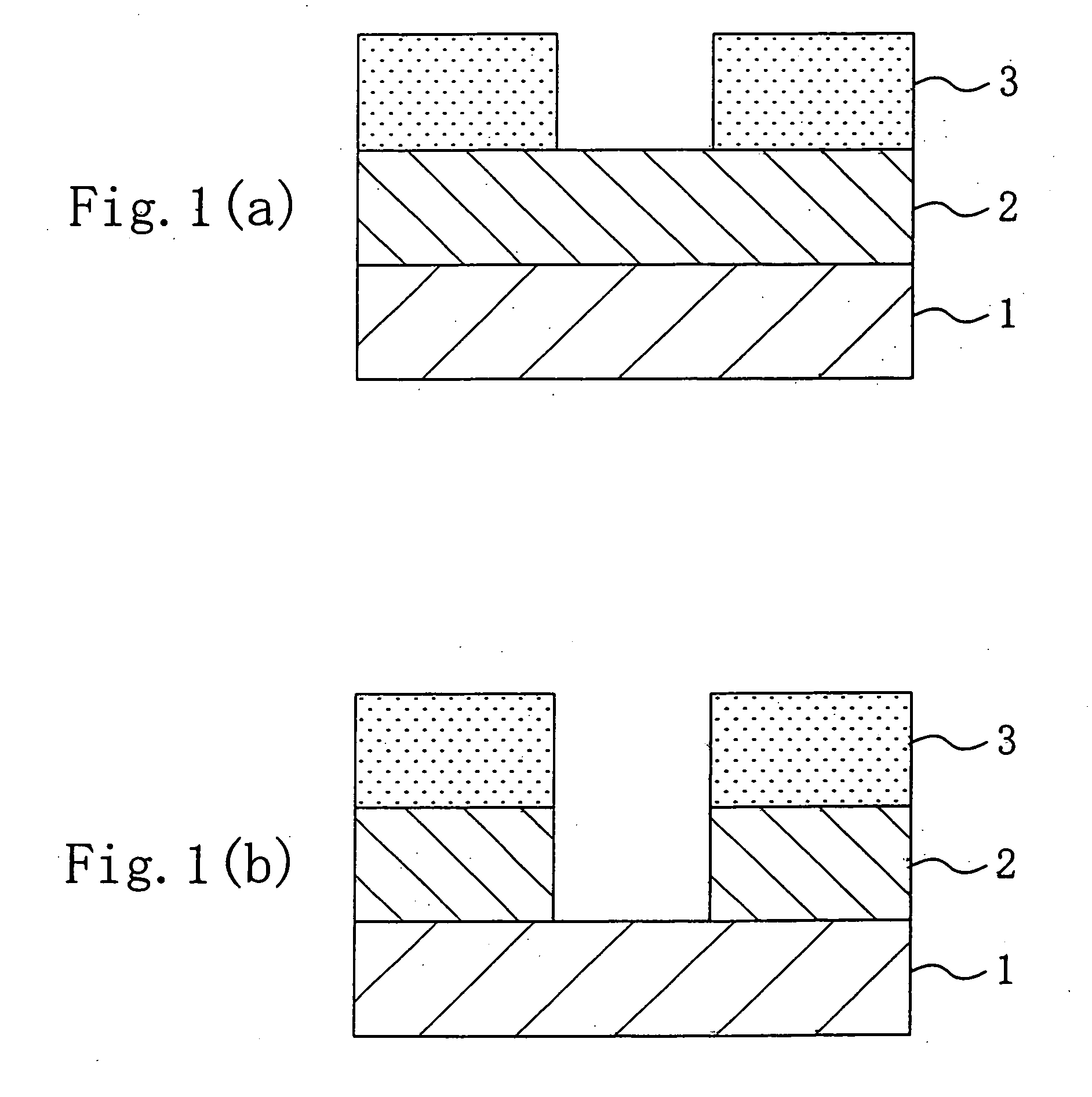Etching method
a technology of etching and etching rate, which is applied in the direction of decorative surface effects, electrical appliances, decorative arts, etc., can solve the problems of degassing, delay in wiring time, and obstacle to the implementation of a semiconductor integrated circuit with higher performance, so as to improve the anisotropic property of etching and the etching rate.
- Summary
- Abstract
- Description
- Claims
- Application Information
AI Technical Summary
Benefits of technology
Problems solved by technology
Method used
Image
Examples
embodiment 1
[0075] A first embodiment of the present invention performs anisotropic etching with respect to an interlayer insulating film composed of an organic compound film by using a plasma derived from an etching gas containing ammonia gas as a main constituent.
[0076] As an exemplary organic compound film, there can be listed a derivative of polyaryl ether or a derivative of polyparaxylene. However, the type of the organic compound film does not particularly presents a problem.
[0077] By way of example, etching is performed in an etching apparatus using a high-density plasma as a plasma source under such conditions that pressure is 5 mTorr, the power of an RF voltage applied to a counter electrode is 3 kW, the power of a bias voltage applied to a sample to be etched is 300 W, and the flow rate of ammonia (NH3) gas is 20 sccm.
[0078] When etching is performed with respect to the organic compound film by using the plasma derived from the etching gas containing ammonia gas as the main constit...
embodiment 2
[0081] A second embodiment of the present invention performs anisotropic etching with respect to an interlayer insulating film composed of an organic compound film by using a plasma derived from an etching gas containing hydrogen gas, nitrogen gas, and inert gas (such as argon gas) as main constituents.
[0082] As an exemplary organic compound film, there can be listed a derivative of polyaryl ether or a derivative of polyparaxylene. However, the type of the organic compound film does not particularly present a problem.
[0083] By way of example, etching is performed in an etching apparatus using a high-density plasma as a plasma source under such conditions that pressure is 10 mTorr, the power of an RF voltage applied to a counter electrode is 3 kW, the power of a bias voltage applied to a sample to be etched is 200 W, the flow rate of hydrogen gas is 30 sccm, the flow rate of nitrogen gas is 10 sccm, and the flow rate of argon gas is 20 sccm.
[0084] When etching is performed with re...
embodiment 3
[0091] A third embodiment of the present invention performs anisotropic etching with respect to an interlayer insulating film composed of an organic compound film by using a plasma derived from an etching gas containing ammonia gas and inert gas (such as argon gas) as main constituents.
[0092] As an exemplary organic compound film, there can be listed a derivative of polyaryl ether or a derivative of polyparaxylene. However, the type of the organic compound film does not particularly present a problem.
[0093] By way of example, etching is performed in an etching apparatus using a high-density plasma as a plasma source under such conditions that pressure is 30 mTorr, the power of an RF voltage applied to a counter electrode is 3 kW, the power of a bias voltage applied to a sample to be etched is 200 W, the flow rate of ammonia gas is 30 sccm, and the flow rate of argon gas is 20 sccm.
[0094] When etching is performed with respect to the organic compound film by using the plasma deriv...
PUM
| Property | Measurement | Unit |
|---|---|---|
| Anisotropy | aaaaa | aaaaa |
| aaaaa | aaaaa |
Abstract
Description
Claims
Application Information
 Login to View More
Login to View More - R&D
- Intellectual Property
- Life Sciences
- Materials
- Tech Scout
- Unparalleled Data Quality
- Higher Quality Content
- 60% Fewer Hallucinations
Browse by: Latest US Patents, China's latest patents, Technical Efficacy Thesaurus, Application Domain, Technology Topic, Popular Technical Reports.
© 2025 PatSnap. All rights reserved.Legal|Privacy policy|Modern Slavery Act Transparency Statement|Sitemap|About US| Contact US: help@patsnap.com

